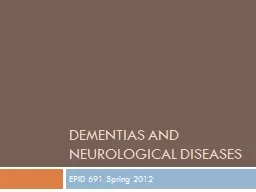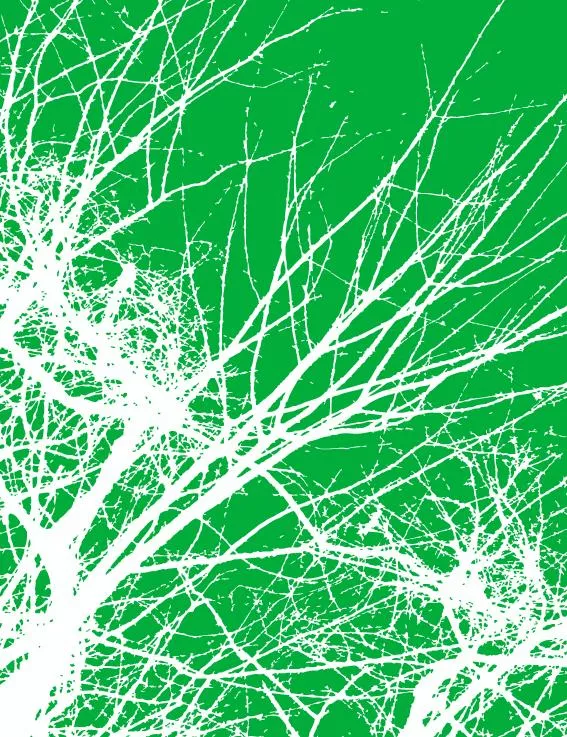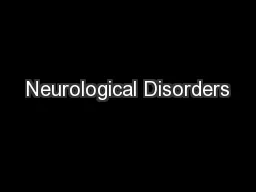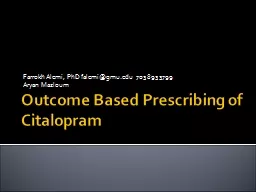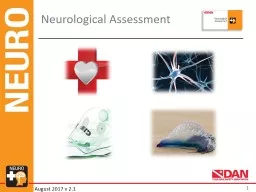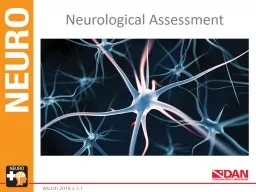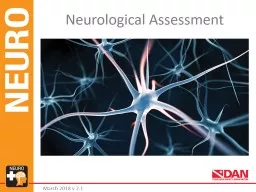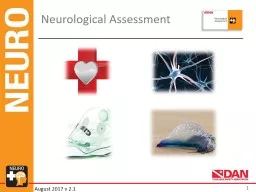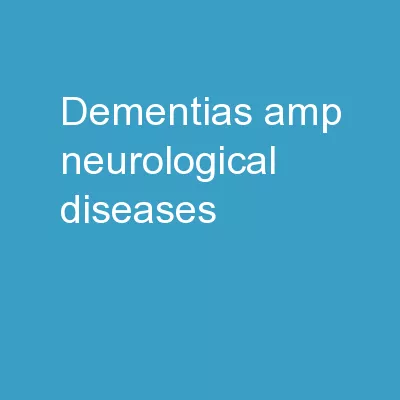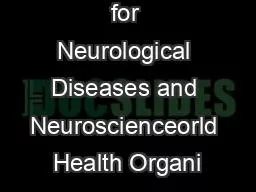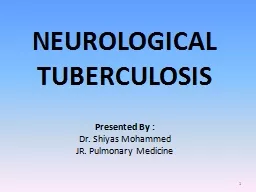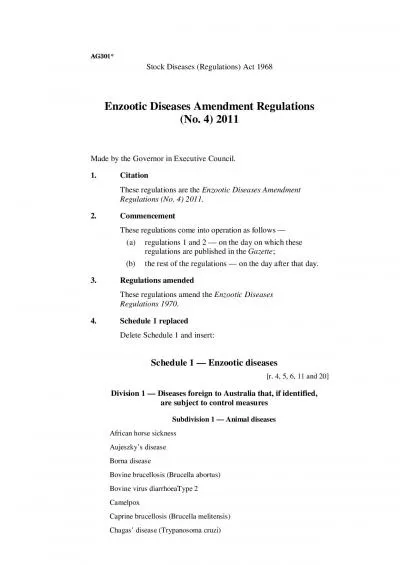PPT-Dementias and Neurological Diseases
Author : pasty-toler | Published Date : 2018-12-06
EPID 691 Spring 2012 What Constitutes a Neurologic Disease Neurologic Disease Neurologic diseases are disorders of the brain spinal cord and nerves Caused by Genetics
Presentation Embed Code
Download Presentation
Download Presentation The PPT/PDF document "Dementias and Neurological Diseases" is the property of its rightful owner. Permission is granted to download and print the materials on this website for personal, non-commercial use only, and to display it on your personal computer provided you do not modify the materials and that you retain all copyright notices contained in the materials. By downloading content from our website, you accept the terms of this agreement.
Dementias and Neurological Diseases: Transcript
EPID 691 Spring 2012 What Constitutes a Neurologic Disease Neurologic Disease Neurologic diseases are disorders of the brain spinal cord and nerves Caused by Genetics Improper development of nervous system. brPage 1br CAPS Eligible Neurological Co nditions NO PCC Required Category 1 SPINA BIFIDA and SYRINGOMYELIA ArnoldChiari Syndrome Arthrogryposis Caudal Regression Syndrome Developmental Cord 26 Neurological disorders: public health challenges 30 the rules and conventions of the International Classi“ cation of Diseases. In some cases these rules are ambiguous, in which event the GBD 2 40 Neurological disorders: public health challenges Times given as guidelines only sometimes people can deteriorate more quickly sometimes more slowly. Dementia reduces the lifespan of affected person INAG 120 – Equine Health Management. November 7, 2011. Photo © UC-Davis, Center for. Equine Health. Overview. The Equine Central Nervous System. Differentiating between neurological disease and lameness – . Farrokh Alemi, PhD falemi@gmu.edu 703 893 3799 . Aryan Mazloum. Personalized Analysis. Right Medication from Start. My Antidepressants Doesn’t Work. Picture taken from . http://www.time.com/time/health/article/0,8599,1905083,00.html#ixzz0kWKdxlNH. August 2017 v 2.1. Overview of Neurological Assessment. . Nervous System Overview. Decompression Illness. Conducting a Neurological Assessment. Skills Development. Final Assessment and Review. 2018 . v 2.1. Getting Started. 2. Introductions. Neurological Assessment Instructor & Staff. Neurological Assessment Provider Candidates. Neurological Assessment Provider Registration Form. Statement of Understanding. 2018 . v 2.1. Getting Started. 2. Introductions. Neurological Assessment Instructor & Staff. Neurological Assessment Provider Candidates. Neurological Assessment Provider Registration Form. Statement of Understanding. August 2017 v 2.1. Overview of Neurological Assessment. . Nervous System Overview. Decompression Illness. Conducting a Neurological Assessment. Skills Development. Final Assessment and Review. Prachi Desai. Epidemiology of Chronic Diseases. Neurological/Nervous System Diseases. (. Medline. Plus. ). What . if effects?. Nervous . system. : brain. , spinal cord, and nerves. Control . all the workings of the body. 1Results of a collaborative study of the World Health Organization and the World Federation of Neurology2Atlas country resources for neurological disorders 2004 1Nervous system diseases 2Health resou . Presented By :. Dr. . Shiyas. Mohammed. JR. Pulmonary Medicine. 1. NEUROLOGICAL TB. Neurological . TB comprises 5-10% of extrapulmonary TB and is increasing globally due to HIV-TB . co-infection.. HAS 222. Presentation Plan. Definition of occupational diseases. Epidemiological data on occupational diseases. Exposure routes for occupational diseases. Classification. of . occupational. . diseases. Chronic wasting disease of deer Contagious agalactia in sheep Contagious bovine pleuropneumonia Contagious caprine pleuropneumonia Contagious equine metritis Crimean Congo haemorrhagic fever Dourine (
Download Document
Here is the link to download the presentation.
"Dementias and Neurological Diseases"The content belongs to its owner. You may download and print it for personal use, without modification, and keep all copyright notices. By downloading, you agree to these terms.
Related Documents

